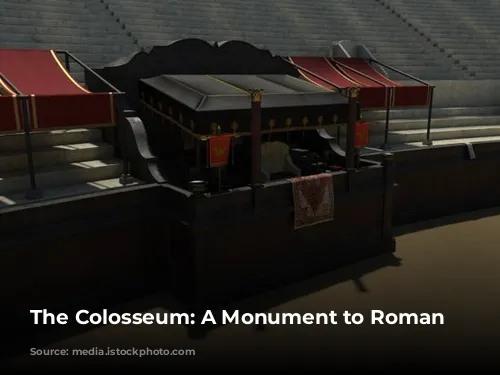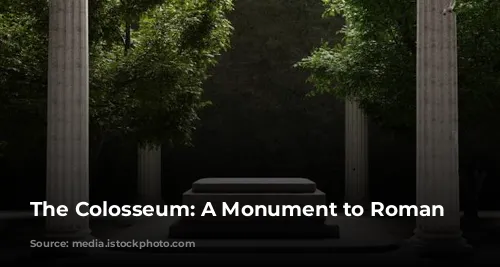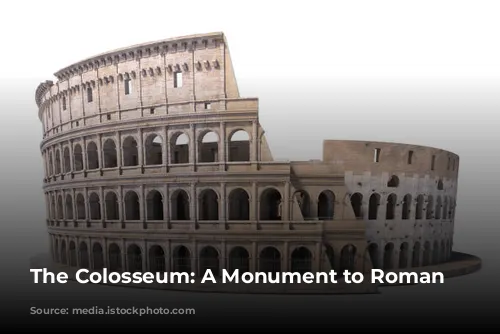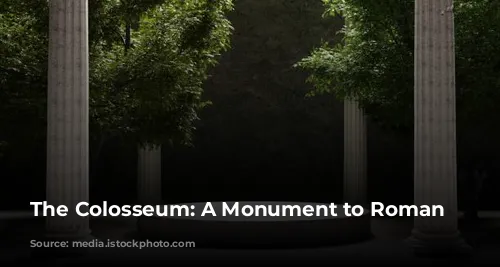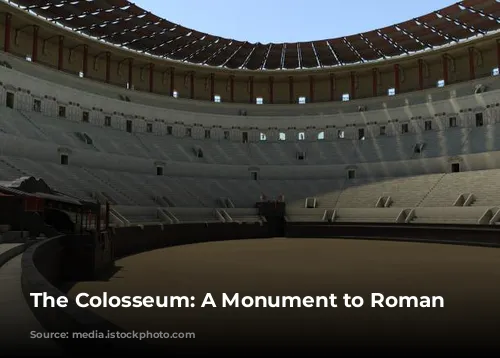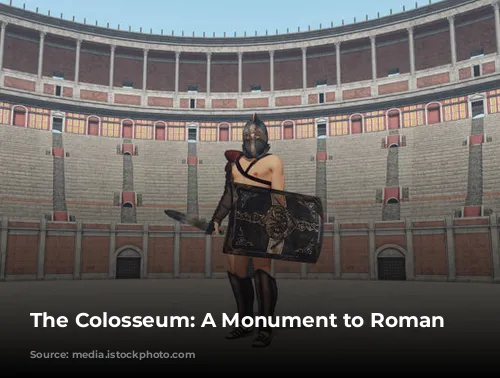The Colosseum, a name synonymous with ancient Rome, is more than just a building; it is a testament to the Roman Empire’s ambition and power. This iconic amphitheater, towering over the city, was the largest ever constructed during the Roman era, surpassing even those built in far-flung provinces like North Africa and Eastern Europe. Its sheer size was meant to project Rome’s dominance as the undisputed center of power in the world.
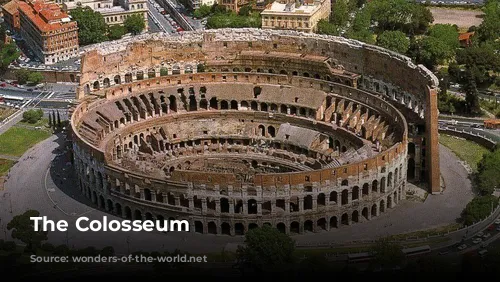
A Colossal Shape
While the Colosseum appears circular from afar, a closer look reveals its true form: a scientifically precise oval, resembling an egg. This deliberate shape, known as an ellipse, results from the impressive ratio between its length (187.75 meters) and width (155.60 meters). Standing tall at 50.75 meters, the Colosseum’s height encompasses its impressive structure, even without the masts that once adorned its summit.
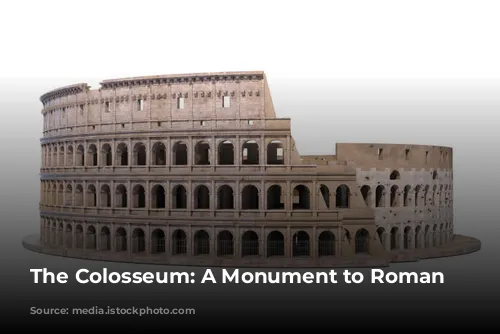
A Stage for Spectacle
The Colosseum’s interior is divided into distinct sections: a vast central arena where gladiatorial combat and public spectacles unfolded, tiered terraces offering spectators various views of the action, and a grand facade that once encircled the entire structure. Today, the terraces remain intact, allowing visitors to visualize the grandeur of the seating arrangement, while the partially preserved facade unveils the building’s intricate construction.
The arena itself is immense, spanning 83 meters in length and 48 meters in width, contributing to the overall oval shape of the Colosseum. This unique design, however, was not a Roman invention. In fact, ancient Romans consistently employed the oval form in their amphitheaters, recognizing its suitability for hosting a wide variety of performances.
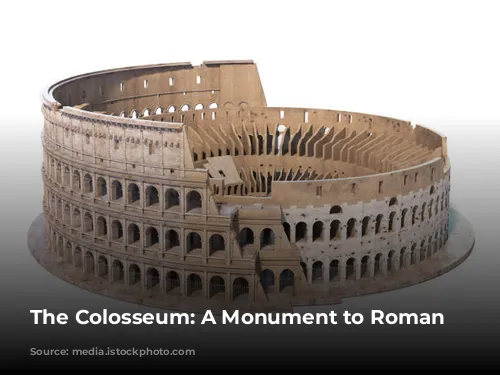
A Symphony of Arches
The Colosseum’s facade features a remarkable system of 80 arcades, distributed across three levels. Each arcade, spanning 4.2 meters in width, rises to a height of 6.45 meters, with the lower arcades reaching a slightly greater height of 7.05 meters. This intricate arrangement, combined with the Colosseum’s impressive dimensions, created an awe-inspiring spectacle that drew massive crowds.
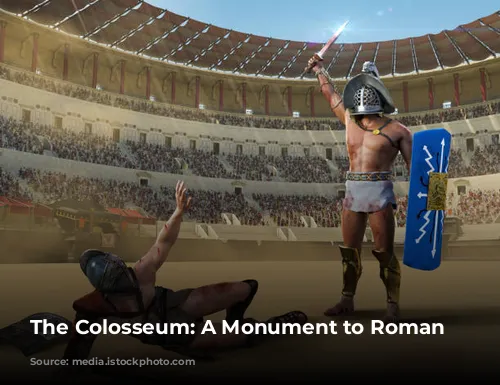
A City Within a City
The Colosseum’s capacity is truly staggering, with estimates ranging from 75,000 to 80,000 spectators, a number comparable to the population of a modern mid-sized city. On event days, Rome would see its population temporarily shift to the Colosseum, highlighting the arena’s immense importance as a gathering place for entertainment and social interaction.
The echoes of cheers, the roar of the crowd, and the dramatic narratives unfolding in the arena would have resonated across the vast seating arrangements, creating a shared experience for thousands of people. This was not merely a place of entertainment; it was a living testament to the power of collective experience, forging a sense of unity and belonging among the citizens of Rome.
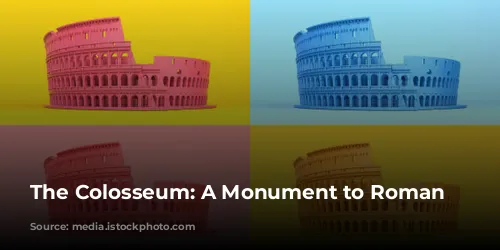
A Reflection of Roman Society
The Colosseum’s seating arrangement was not simply a matter of convenience; it mirrored the social hierarchy of ancient Rome. The more prominent individuals in Roman society were allocated the best seats, closer to the action, while others were situated in less desirable locations. This seating system reflected the rigid social structure that characterized Roman life, with every individual’s position reflecting their place in society.
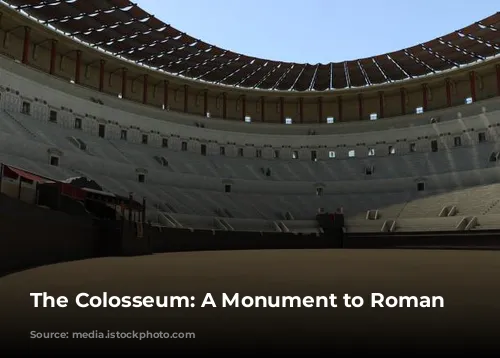
Comparing the Colosseum’s Majesty
The Colosseum’s sheer size and grandeur are undeniable. But to fully appreciate its significance, it is helpful to compare it with other Roman amphitheaters, understanding the context in which it was built.
The amphitheater of Leptis Magna, erected in North Africa in 56 AD, boasts impressive dimensions of 121 x 111 meters, encompassing an arena measuring 57 x 47 meters. Further south, the amphitheater of Pompeii, constructed in 80 BC, stands as one of the oldest permanent Roman amphitheaters, measuring 135 x 104 meters, with an arena spanning 67 x 35 meters.
Across the Mediterranean, the arenas of Nîmes in France were constructed around 90 AD, a decade after the Colosseum. While impressive in their own right, they fall short of the Colosseum’s scale, measuring 133 x 101 meters with an arena of 69 x 38 meters. In Spain, Merida boasts the ruins of its Roman amphitheater, built in 8 BC, measuring 126 x 65 meters. Finally, the amphitheater of Pula in Croatia, built in 79 AD, boasts dimensions of 133 x 105 meters, standing as a contemporary of the Colosseum.
While these amphitheaters demonstrate the widespread influence of Roman architecture and the popularity of gladiatorial contests, they all pale in comparison to the Colosseum’s sheer scale and iconic status.

Conclusion
The Colosseum is more than just a relic of the past; it is a testament to the Roman Empire’s enduring legacy. Its impressive size, intricate construction, and capacity to host massive crowds reflect the ambition and power of ancient Rome. This iconic amphitheater continues to captivate visitors from around the world, serving as a reminder of the awe-inspiring achievements of a civilization that left an indelible mark on the course of history.
